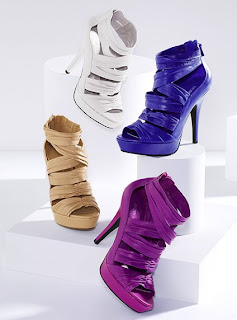With a season of glorious days coming around the corner, what do you think is the hottest accessory for this summer fashion? One single accessory sometimes plays an important role in pepping up the style.
Sunglasses; they are the must-have item to avoid the direct sunlight. Besides protecting your eyes, sunglasses have become a part of the costume.
Over-sized sunglasses, which was a trend in the 80's, are brought back into a current fashion. If you want to let your sunglasses stand out, choose ones in bright colors of frames. If you don't care so much about looking like a dragonfly, try on shutter shades sunglasses. No doubt your style will look funky!
Another way to protect yourself against the sunlight, yet looking stylish at the same time is by wearing a hat. This summer, basket-weaved fedora hats will take on. Black, white, and taupe. Either color goes with the outfit, but taupe is more in common.
Even if you are not going to the Kentucky Derby, put on floppy straw hats. They will be likely to catch on the street style, so why not to lead it?
Jewelry lovers! What would you ornament your dress with? Braided hoop earrings, pearl bracelets, multi-layered necklaces, and beaded knuckle rings are such goodies. These are handy tools to brighten up the look.
Or get starched up with "bling-bling!"
Too lazy to coordinate the entire style? There is an instant way of looking like a fashionista: headbands or headwraps. It is a way to impress for less as well as a quick way to hide messy hair
Of course, anyone can become a fashionista from any moment on. With or without accessories, you can invent your own style. Use your own sense. Every one of us is unique, but it's all up to you to make good use of that uniqueness.
Before ending this column, I'd like to give my special thanks to all the readers. I had fun writing especially about fashion around the world, because I personally got to learn intriguing cultural values behind the fashion.
And lastly, I wish you all have a dazzling summer with flashing smiles!
Too lazy to coordinate the entire style? There is an instant way of looking like a fashionista: headbands or headwraps. It is a way to impress for less as well as a quick way to hide messy hair
Of course, anyone can become a fashionista from any moment on. With or without accessories, you can invent your own style. Use your own sense. Every one of us is unique, but it's all up to you to make good use of that uniqueness.
Before ending this column, I'd like to give my special thanks to all the readers. I had fun writing especially about fashion around the world, because I personally got to learn intriguing cultural values behind the fashion.
And lastly, I wish you all have a dazzling summer with flashing smiles!



















































